Behind the scenes with community cat programs
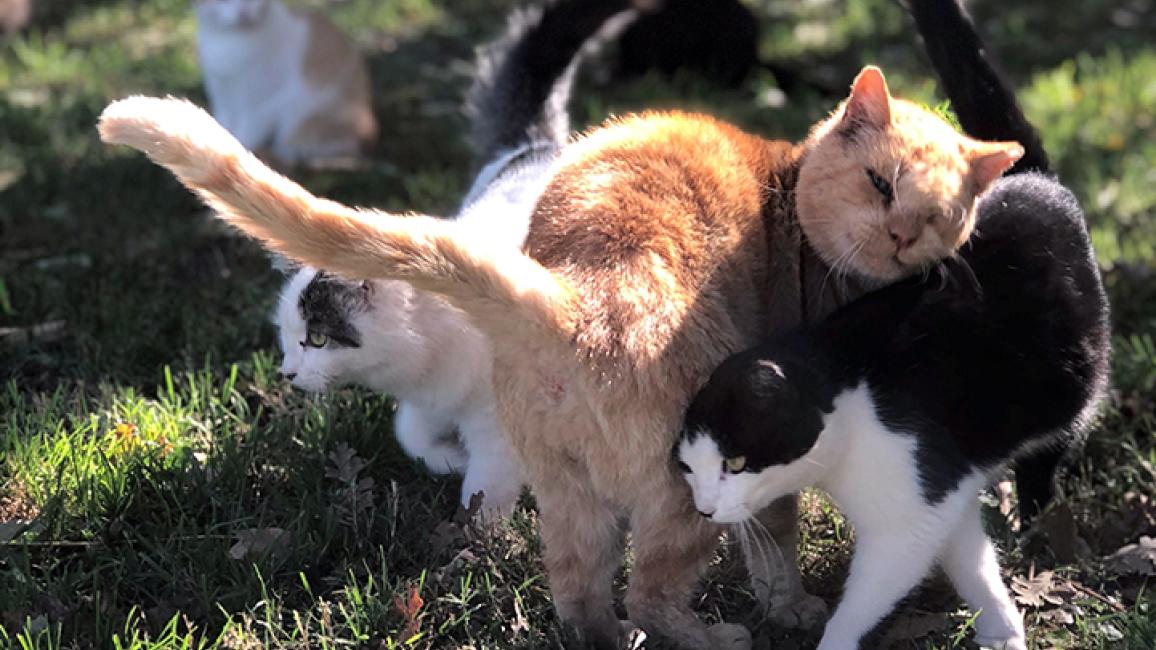
Every animal has a story. With Best Friends programs impacting thousands of cats, dogs and other animals across the country, there are more stories than we can possibly share. Our community cat programs in particular touch so many lives across the country, as Best Friends works together with our partner organizations to keep outdoor free-roaming cats out of shelters.
Every single day, our teams — from California to Florida and many places in between — work on trap-neuter-return programs that support cat caregivers and our shelter partners. In the process, they meet all kinds of people and animals from all walks of life.
In the following stories, two Best Friends staff members share stories about cats and people who left a lasting impression.
How Best Friends helps cats through trap-neuter-return
Osceola, Florida: Trapping cats, and sometimes other animals
From Marla Browne, Best Friends community cat program manager
Wrapping up a week in Osceola, Florida, where we are digging into community cat programming with Osceola Animal Services. Our program is geared to hit at least 2,500 spay/neuter surgeries a year (for three years) and it’s targeted in such a way to impact shelter intake and euthanasia rates. (Talk about use of targeted resources and meaningful work! Such good stuff.)

Neighbors were eager to help return cats in Osceola.
We come across lots of animals other than cats, too — like a surprised possum who was attracted to the cat food in one of our humane traps. We released him or her — no worse for wear. This little dog was running along a very busy avenue. Snatching her was not part of our packed schedule; but what do you do? We were able to catch her and then get her back to her family because she was wearing a collar and tag.
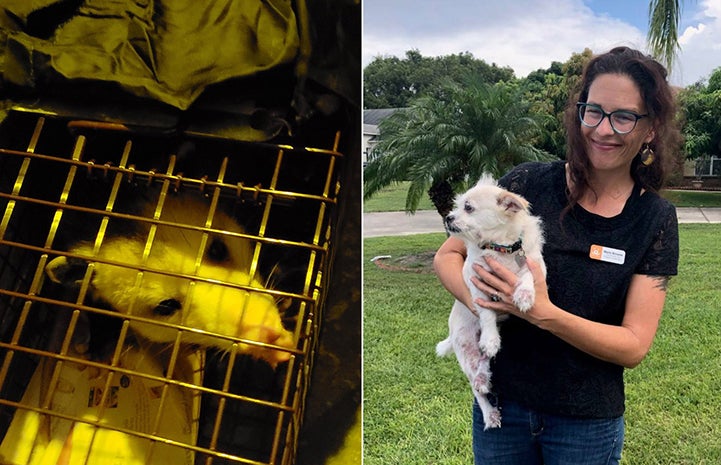
Sometimes we catch and help non-cats too, like this possum, and sweet dog, Sandy, pictured with Marla Browne.
Updates from Liz Finch, Best Friends director of national community cat programs
A sweet surprise in Stanislaus County, California
This is from our community cat program (CCP) with Stanislaus Animal Services Agency, in Modesto, California. This lovely 83-year-old lady was on our route to return four little black kittens. Apparently, mama kitty had kindly deposited these babies upon the woman’s front porch when they were wee tots, and she took them in and cared for them. (Yes, we have plans to return and trap mama — soon.)
When she learned about the CCP, she asked a friend to take the kitties to be spayed and neutered. Since they bounced around indoor and out, her friend said that they’d be returned “on the corner” of the block by our team, which turned out to be a bit of miscommunication. I’m pretty sure this woman spent days looking out her front door to catch sight of her babies coming home.
Two days later when the CCP team pulled up to her house and knocked on the door to return the cats, the woman was overjoyed. “What? Now? They’re here?” she said excitedly while hustling to put a few of her own cats away and open the bathroom where she’d been keeping the kittens.
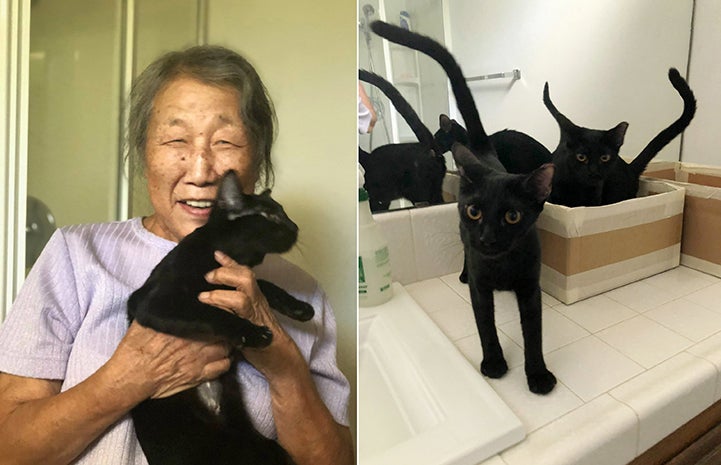
I’m pretty sure those kittens aren’t going to be staying in the bathroom for long. They promptly started bouncing off the walls and running out the door every time we tried to enter. I’ve never seen someone so happy to have their cats back. She was squeezing each of them, thanking us profusely and fussing about not yet having the bathroom set up.
Following us back to the van, she continued thanking us for bringing them back. Then she glanced down at the program flyer we’d given her and saw the Best Friends Animal Society logo. “Best Friends! I’m a member,” she exclaimed. “I give every month!”
It was a happy ending for four kittens and a wonderfully kind and generous resident of Stanislaus County.
Extraordinary help for cats in Bakersfield, California
Our community cat program in partnership with Bakersfield Animal Care Center in California is an example of the many ways that people help in their own community.
One of the most valuable resources in all our programs are the residents of the communities themselves. Many people who reach out to us for our services are happy to do their part by trapping the cats and bringing them to us, in either their own personal trap or traps they’ve borrowed from us. One such outstanding community member is our friend Michael, who is technically homeless, but has been able to take shelter at a local church and become the resident cat expert.
His love for these cats is obvious, and he reached out to us for assistance to get them spayed or neutered. He offered to trap the cats on his own in small groups of three until he worked his way through the colony. When we found out that he lacked transportation and couldn’t deliver cats to our office, we offered to come up with alternative ways to transport them to the clinic. But he insisted that despite the challenge, we should use our time to serve other people “who need the help more,” and said he would find a way to bring us the cats.
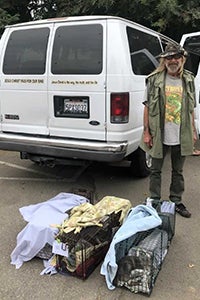
Michael with some of his feline friends, ready to head home after spay/neuter surgeries.
The church where he resides has graciously allowed his sister to borrow a church van to deliver cats. But even if this option isn’t available, Michael never fails to find transportation to make it work. Michael has been an inspiration to us, with his compassion and dedication to these community cats, and we’re honored that we have such an amazing person on our side to help the cats of Bakersfield.
Redefining ‘feral’ cats in Jefferson Parish, Louisiana
In case you’re wondering why we call them “community cats” instead of feral cats, it’s because we recognize and respect the relationships that caregivers have with their cats. Plus, not all outdoor kitties are feral. Take these cats from Jefferson Parish, for example. The orange-and-white boy is a favorite of the family that lives here, and he’s far from wild.

He even insisted on testing out the traps we were setting for the cats that still needed to be spayed or neutered and ear-tipped. Luckily, we were able to distract him long enough with a can of food, so that we could set up traps elsewhere on the property.
The orange fellow cruising towards me is part of a colony that hangs out behind the East Bank shelter in Jefferson Parish, and he clearly doesn’t fit the stereotype of a feral cat — unlike his friends, who kept their distance.
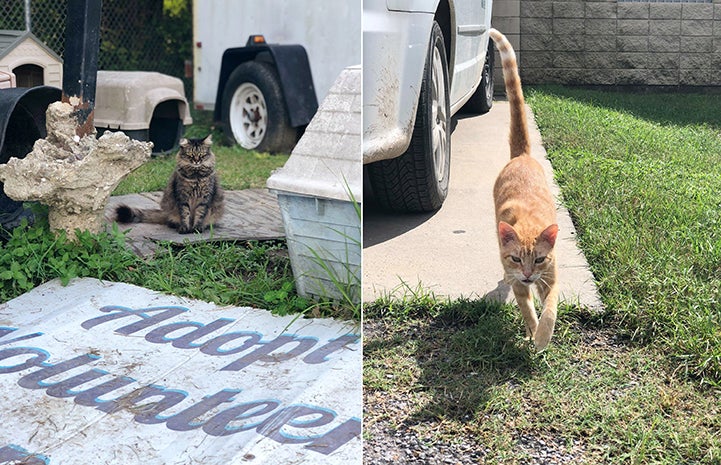
So, the next time you meet a friendly stray kitty, remember that someone (or perhaps a group of people) loves that cat and is probably caring for him. He might even be someone’s indoor-outdoor or outdoor-only cat. Even if you don’t agree with keeping cats outside, not every cat has the home we think they need. And the cat might even be outside for a good reason — such as a habit of peeing on the bed, for example.
Not every outdoor cat needs rescuing, but those kitties in the shelter do need it, because their time is often limited. By all means save a life, but leave the community cats alone to enjoy theirs!